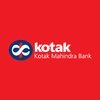
i
HDFC
Bank
Proud winner of ABECA 2025 - AmbitionBox Employee Choice Awards
Filter interviews by
HDFC Bank Credit Manager Interview Questions and Answers
23 Interview questions
Fund based lending involves actual transfer of funds to borrower, while non fund based lending involves guarantee or letter of credit.
Fund based lending involves direct transfer of funds to borrower for use, such as term loans or working capital loans
Non fund based lending involves providing guarantee or letter of credit to borrower without actual transfer of funds
Examples of fund based lending include cash credit...
DSCR stands for Debt Service Coverage Ratio, which is a financial ratio that measures a company's ability to pay its debts.
DSCR is calculated by dividing a company's operating income by its total debt service obligations.
A DSCR of 1 or higher indicates that a company is generating enough income to cover its debt payments.
A DSCR below 1 means that a company may have difficulty meeting its debt obligations.
Lenders o...
Points to check in CIBIL report include credit score, payment history, credit utilization, and credit inquiries.
Credit score: Check if the score is within the acceptable range.
Payment history: Ensure all payments are made on time and there are no defaults.
Credit utilization: Verify the percentage of credit limit being used.
Credit inquiries: Check for any recent inquiries which may impact the credit score.
Check points for assessing loan proposals include financial stability, credit history, repayment capacity, collateral, and purpose of the loan.
Financial stability of the borrower
Credit history of the borrower
Repayment capacity of the borrower
Collateral provided by the borrower
Purpose of the loan
What people are saying about HDFC Bank






The 5 C's of credit are character, capacity, capital, collateral, and conditions, used by lenders to evaluate a borrower's creditworthiness.
Character: Refers to the borrower's reputation and credit history.
Capacity: Refers to the borrower's ability to repay the loan based on income and existing debts.
Capital: Refers to the borrower's assets and net worth.
Collateral: Refers to assets that can be used as security fo...
I will check liquidity, profitability, and solvency ratios before granting a loan to a company.
Liquidity ratios such as current ratio and quick ratio to ensure the company has enough short-term assets to cover its liabilities
Profitability ratios such as return on assets and return on equity to assess the company's ability to generate profits
Solvency ratios such as debt-to-equity ratio and interest coverage ratio t...
Risk is the potential for loss or harm resulting from an action or decision.
Risk is the likelihood of an event occurring and the impact it will have.
It involves identifying potential hazards and assessing their likelihood and impact.
Examples of risks include financial risks, operational risks, and reputational risks.
Risk management involves taking steps to mitigate or avoid risks.
Effective risk management can help...
A Bank Guarantee is a promise from a bank to pay a specified amount if the beneficiary fails to fulfill their obligations.
It is a type of financial instrument used to secure payment in international trade
It is often used in construction projects to ensure completion of the project
The bank issuing the guarantee is liable to pay the beneficiary if the terms of the guarantee are not met
It is commonly used in import/e...
Current ratio is a financial ratio that measures a company's ability to pay its short-term liabilities with its short-term assets.
Current ratio is calculated by dividing current assets by current liabilities.
A ratio of 2:1 is considered healthy, indicating that the company has twice as many current assets as current liabilities.
A ratio below 1:1 indicates that the company may have difficulty paying its short-term ...
Debtor days refer to the average number of days it takes for a company to receive payment from its customers.
It is a measure of a company's accounts receivable efficiency
Calculated by dividing accounts receivable by average daily sales
A lower debtor days ratio indicates better cash flow management
Example: If a company has $100,000 in accounts receivable and its average daily sales are $10,000, its debtor days woul...
HDFC Bank Credit Manager Interview Experiences
53 interviews found
I applied via LinkedIn and was interviewed in Jan 2024. There were 3 interview rounds.
Assessment,................
(1 Question)
- Q1. About yourself, why this Job
(1 Question)
- Q1. Salary discussion
I applied via Referral and was interviewed in Oct 2023. There were 2 interview rounds.

(2 Questions)
- Q1. Ratio , agri msp , cibil
- Q2. Ratio and agri related q
Interview Preparation Tips
(1 Question)
- Q1. About company and related to work
(1 Question)
- Q1. Basic questions
(1 Question)
- Q1. Ratio analysis and cash flow analysis
(1 Question)
- Q1. Itr articleship exp genearal interview
Interview Preparation Tips
I applied via Naukri.com and was interviewed before Apr 2023. There was 1 interview round.
(2 Questions)
- Q1. Where do you see in 5 years
- Ans.
In five years, I envision myself as a senior credit manager, leading a team and driving strategic initiatives to enhance credit processes.
Advancing to a senior credit manager role, overseeing a larger team and more complex portfolios.
Implementing innovative credit assessment tools to improve efficiency and accuracy, similar to how AI is transforming the industry.
Developing training programs for junior credit analysts t...
- Q2. I see myself as core part of a team
I applied via Naukri.com and was interviewed in Mar 2023. There were 2 interview rounds.

(2 Questions)
- Q1. About experience and banking releated
- Q2. Rations for credit analysis
- Ans.
Ratios used in credit analysis
Liquidity ratios: current ratio, quick ratio
Profitability ratios: return on assets, return on equity
Debt ratios: debt-to-equity ratio, debt service coverage ratio
Efficiency ratios: inventory turnover, accounts receivable turnover
Examples of industry-specific ratios: net interest margin for banks, occupancy rate for hotels

There was an aptitude test after screening round of resume
Then they were 10 of a group for GD round
(1 Question)
- Q1. They ask about your self about exp and technical round
I applied via Referral and was interviewed before May 2023. There was 1 interview round.
(1 Question)
- Q1. Previous experinec and work profile
- Ans.
Experienced Credit Manager with a strong background in risk assessment, credit analysis, and financial reporting.
Managed a portfolio of over 200 clients, ensuring timely payments and minimizing defaults.
Conducted thorough credit assessments using financial statements and credit reports to evaluate risk.
Implemented a new credit scoring model that reduced approval times by 30%.
Collaborated with sales and finance teams to...
Interview Preparation Tips
I applied via Naukri.com and was interviewed in Dec 2022. There were 3 interview rounds.

Financial Management, Crediworhness of the borrower, Financial Analysis,deep understanding of the secured and unsecured loan
(3 Questions)
- Q1. Negotiation of CTC , about the job profile , what is your CTC expectation? Do you have the following list of documents for the further process?
- Q2. Negotiation of CTC , about the job profile , Do you have the following list of documents for the further process?
- Q3. What is your CTC expectation?
Interview Preparation Tips
HDFC Bank Interview FAQs
Some of the top questions asked at the HDFC Bank Credit Manager interview -
The duration of HDFC Bank Credit Manager interview process can vary, but typically it takes about less than 2 weeks to complete.
Tell us how to improve this page.
HDFC Bank Interviews By Designations
- HDFC Bank Relationship Manager Interview Questions
- HDFC Bank Deputy Manager Interview Questions
- HDFC Bank Sales Officer Interview Questions
- HDFC Bank Assistant Manager Interview Questions
- HDFC Bank Personal Banker Interview Questions
- HDFC Bank Manager Interview Questions
- HDFC Bank Credit Manager Interview Questions
- HDFC Bank Sales Manager Interview Questions
- Show more
Interview Questions for Popular Designations
Overall Interview Experience Rating
based on 53 interview experiences
Difficulty level
Duration
Credit Manager Interview Questions from Similar Companies
HDFC Bank Credit Manager Reviews and Ratings
based on 604 reviews
Rating in categories
|
Deputy Manager
15.3k
salaries
| ₹3.8 L/yr - ₹8.5 L/yr |
|
Manager
10.5k
salaries
| ₹6.1 L/yr - ₹13.3 L/yr |
|
Assistant Manager
9.5k
salaries
| ₹2.4 L/yr - ₹6 L/yr |
|
Senior Manager
7.2k
salaries
| ₹11.5 L/yr - ₹20 L/yr |
|
Relationship Manager
6.4k
salaries
| ₹3.4 L/yr - ₹12.2 L/yr |

ICICI Bank

State Bank of India

Axis Bank

Kotak Mahindra Bank
- Home >
- Interviews >
- HDFC Bank Interview Questions















